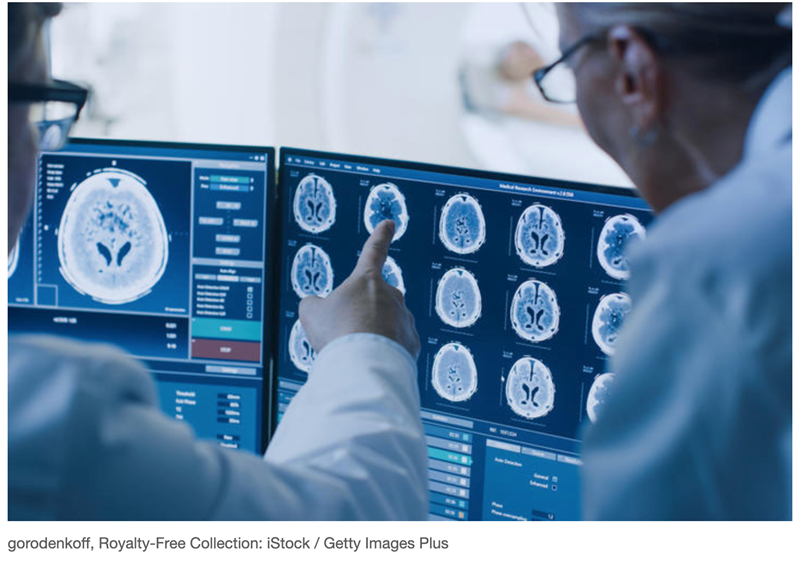Radiologists Concerned With Contrast Agent Availability as MRI Procedures Increase
 A study commissioned by Bracco in collaboration with Sermo, a global medical research company, reports that one in two (55%) have concerns about the availability of gadolinium-based contrast agents (GBCAs) for use in MRI procedures. The same study also found that over half (53%) of radiology professionals have seen an increase in MRI procedures over the last year. The study delved into the perspectives and expectations of 200 radiology professionals, with a specific focus on MRI contrast agents.
A study commissioned by Bracco in collaboration with Sermo, a global medical research company, reports that one in two (55%) have concerns about the availability of gadolinium-based contrast agents (GBCAs) for use in MRI procedures. The same study also found that over half (53%) of radiology professionals have seen an increase in MRI procedures over the last year. The study delved into the perspectives and expectations of 200 radiology professionals, with a specific focus on MRI contrast agents.
The shortage of iodinated contrast for computed tomography scans in early 2022 may be one aspect fueling concerns over supply chain disruptions. Radiologists in small hospitals express the highest level of concern (75%) about the availability of gadolinium-based contrast agents compared to 35% from radiologists at larger institutions. The survey also finds that 63% of radiologists believe it is important for contrast agents to be manufactured in the U.S, with 88%explaining products manufactured in the U.S. – through closed supply chains – are one option to lessen concerns about availability.
When asked to rank factors critical to the success of their radiology practices, professionals listed supply availability (87%), image quality (92%), and patient safety (93%) above other options such as revenue generation, staff training, and sustainable practices.
"We are continually listening to and value the needs of radiologists," said Cosimo De Pinto, Senior Vice President of Sales and Marketing at Bracco Diagnostics Inc. The results of this survey mirror what we have been hearing from our customers: HCPs are concerned about the availability and supply of contrast media, a key part of the diagnostic process. That is one of the key reasons we made a strategic, global collaboration with Guerbet in both research, development, and manufacturing of VUEWAY injection. This strategic collaboration will expand access to this important new contrast agent which has the potential to help improve diagnoses and ultimately improve patient care."
An astonishing 99% of radiologists confirm they are interested in using an MRI contrast agent that contains half the amount of gadolinium with the breakdown being 60% very interested and 39% somewhat interested.
Radiologists are confident about keeping pace with advancements in the field but acknowledge challenges and opportunities. Harnessing Artificial Intelligence (AI), healthcare spending, and attracting future talent are the foremost challenges.
"These survey results inspire us to continue advancing innovation in 2023 and beyond," said Fulvio Renoldi Bracco, Vice-Chairman & CEO of Bracco Imaging. "Whether we're talking about the promise of AI in diagnostic imaging or the clinical value of new contrast agents, a key takeaway for the diagnostic imaging industry at large, is that the road to innovation often lacks involvement from radiologists themselves. By bringing in the perspectives of those on the frontlines, through surveys such as this and other means, Bracco continues to hone our focus for where to improve techniques and processes in ways that will maximize clinical benefits."
Additional key insights from the survey include:
- More than a quarter (26%) of radiologists experienced issues with the availability of gadolinium-based contrast agents in the past few years.
- While there is some concern (46%) about the use of gadolinium-based contrast agents, there is greater concern about the amount of gadolinium-based contrast agents (86%).
- Just over a third of radiologists (35%) say their patients express concerns about MRI contrast agents used in their bodies – no surprise considering 41% of radiologists say their patients are more informed about MRI contrast agents than just a few years ago.
- More than a third of radiologists (35%) are thinking about environmental impact and sustainability more than they did a few years ago.
The online survey captures quantitative data from 200 radiologists (20 Technologists/ Technicians, 164 MRI Radiologists/Chief Radiologists, and 16 Imaging Directors) between October 26 through November 4, 2022. The majority of respondents work in a hospital (147), with imaging centers (40) and outpatient departments (13) also being represented.